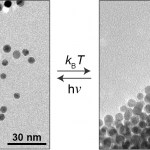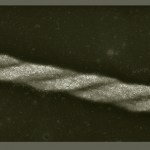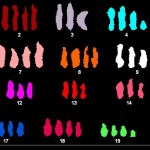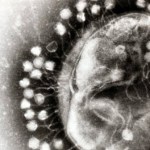Genetic tool
One day in the future, we may be treating our ailments with microbiotic combinations designed specifically to correct imbalances in our personal microbiomes. We’ll bring our prescriptions on rewritable paper and pay using shimmery optical chips embedded in our cell phone cases or maybe our jewelry. Or we’ll be waiting in our doctor’s office for a simple test of our microbiogenome to see if a light-based nanoparticle delivery treatment is working, while watching iridescent optical displays that change as we move...
These future scenarios (and many more) are all imaginary, but…
Once again, there are three new pieces online on our website, each wonderful in its own way. But Haiku just didn’t seem to fit this batch. So, with apologies to the scientists, here are three limericks on the newest Institute research. As before, follow the links to get to our website.
(Incidentally, there is some precedent for limerick writing at the Weizmann Institute. The late Prof. Amikam Aharoni, who also wrote some serious stuff on ferromagnetism, was known for his limericks.)
The Quasar
There once was a baby black hole
That went for a short little stroll
It zigged and it zagged…
First, there was the great hope of induced pluripotent stem cells (iPSCs), and then there was the inevitable letdown. When the announcement came, in 2006, that simple adult skin cells could be reprogrammed – reverted back to an embryonic stem cell state by the addition of just four genes – it seemed like an almost magical solution to the problems of using stem cells from embryos. But then some studies started to find that the reprogramming process was not perfect – iPSCs were similar, but not identical, to the cells from early embryos. More critically, only about 1% of the cells treated with…
Another advance in cancer research is featured on our website this week. Among other things, this one highlights the dangers of assuming causation from correlation. Prof. Dov Zipori and his team were looking at adult stem cells in the bone marrow. These hold a lot of potential for treating many kinds of disease but, like many kinds of stem cells, there is a risk of these cells differentiating into cancer instead of the intended normal tissue replacement. The idea was to find a marker that could tell which cells were more likely to turn cancerous, thus making the use of these stem cells safer…
We were just getting used to the idea of our digestive tract as an ecosystem. There are 10 times as many bacteria in our gut as there are cells in our bodies, and the ecological balance between the different types might affect everything from our tendency to gain weight to our general health and susceptibility to various diseases.
Now, a Weizmann Institute researcher has exposed a whole new layer of this ecosystem: the viruses – called phages – that infect our gut bacteria.
Dr. Rotem Sorek and his team identified hundreds of these phages in the human gut. They were able to find them thanks to…
DNA testing can reveal how closely related you are to a group of people halfway around the world or, if you're doing evolutionary research, where organisms fit on taxonomic trees. The same DNA tests, when performed on the cells in a single human body, can be used to reconstruct lineage trees that can trace the cells' ancestry back to the embryo.
The principle in all three cases is the same: DNA amasses mutations over time, and these mutations can be used to assess how far back two people, organisms or cells shared a common parent.
The idea for the cell lineage trees comes from the group of…



